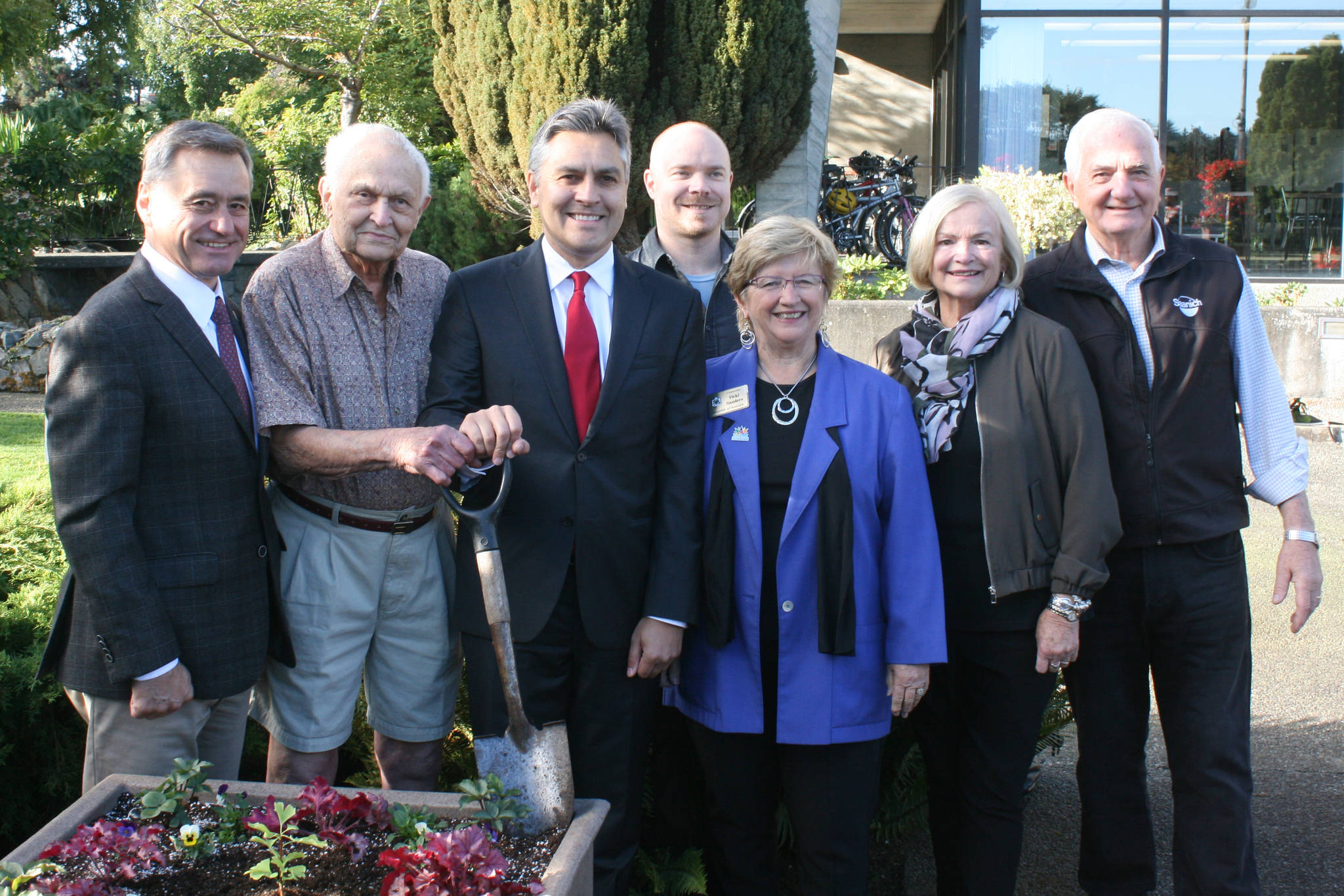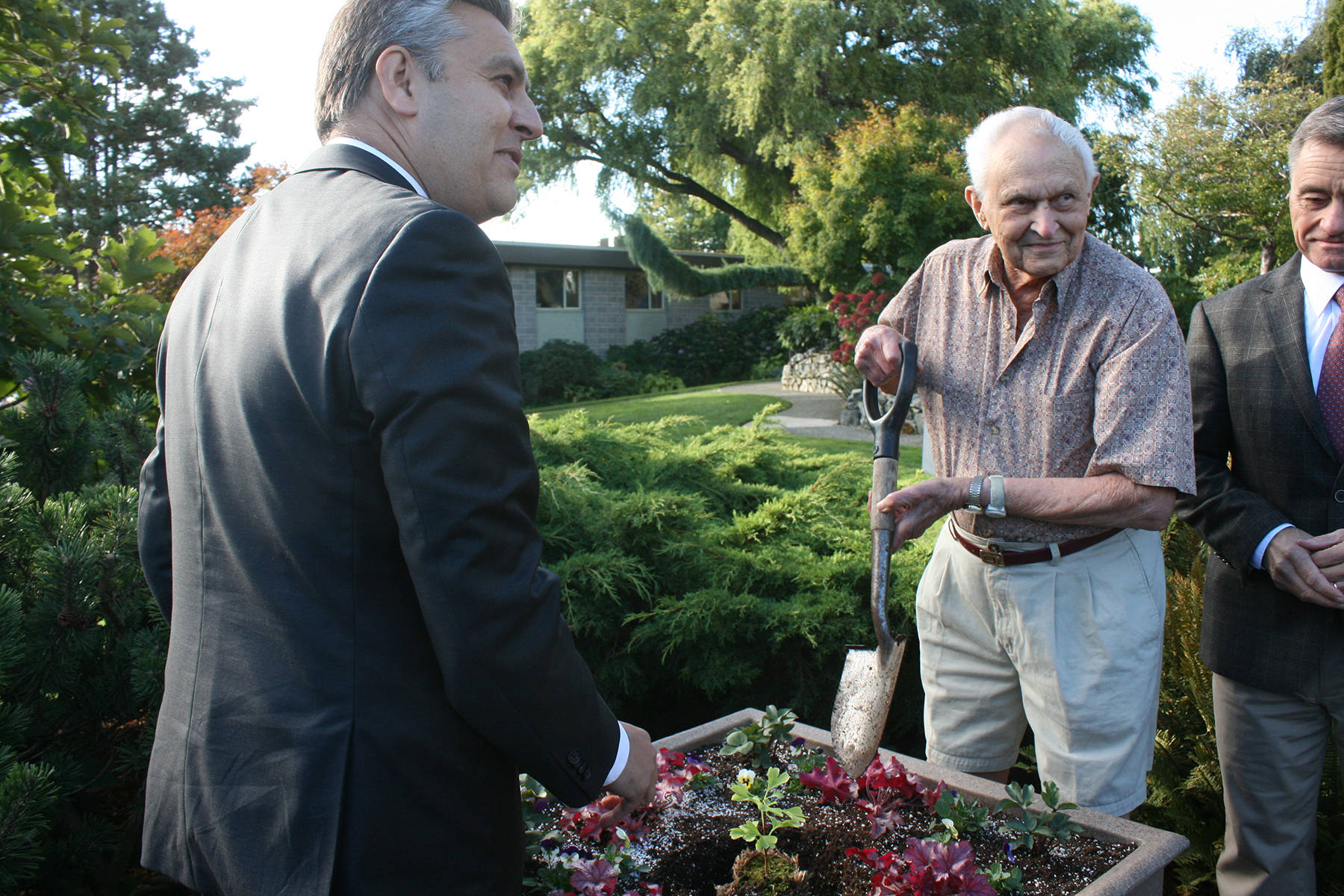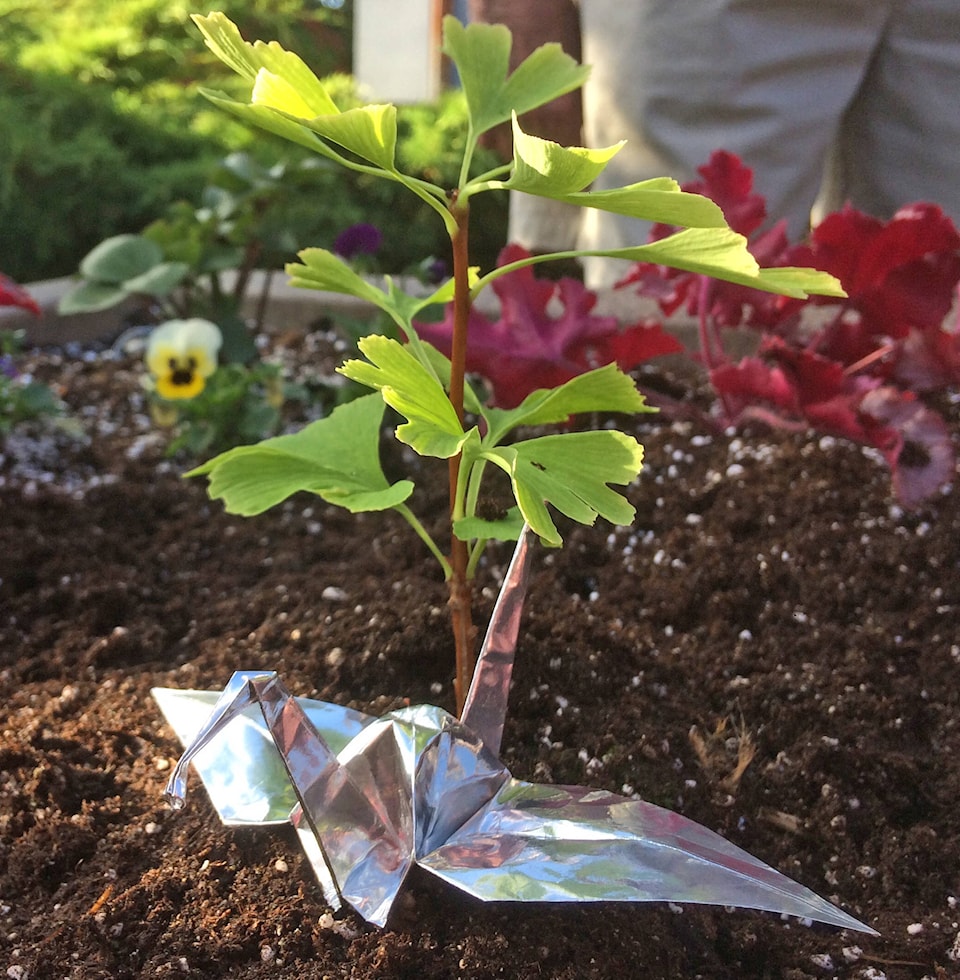There are few people left on Earth who can recount the atrocities that Rudi Hoenson has seen, let alone do it while standing in shorts outside Saanich Municipal Hall on the last day of summer.
On Thursday, known as the International Day of Peace, Hoenson, a Second World War prisoner and Nagasaki nuclear holocaust survivor, was at Saanich Municipal Hall to help Mayor Richard Atwell, Saanich councillors, staff and others from the community in planting a ceremonial peace tree.
Hoenson shoveled room for the eight-inch tall Ginkgo biloba seedling that grew from a seed which survived the 1945 atomic explosion in Hiroshima. After, he recalled the memories and nightmares that still haunt him 72 years later.
“I always get upset as it gets closer to [the Nagasaki anniversary of] Aug. 9,” Hoenson said.
RELATED: Saanich’s prisoner of war survived on rice for 3.5 years
“[The bomb] was a terrible thing, it wiped everything, there was nothing standing,” said Hoenson, who’s still unsure how he ended up being the only survivor of 200 prisoners of war interned at a Japanese shipyard.
Hoenson was a 19-year-old Dutch soldier who was captured fighting the Japanese in the Indonesian jungle. He was imprisoned with about 534 Dutch soldiers and remained a POW for three and a half years.
Over that time about 170 of his fellow prisoners were moved to work in a mine and another 164 died from the harsh conditions. Hoenson, meanwhile, was one of 200 in a work camp near Nagasaki when the bomb ended their internment.
It was mayhem when it fell.
As he left the compound (which some prisoners struggled to d0, having suffered terrible burns), Hoenson and others walked through the Nagasaki area and were put to work.
“The women and children, you see them there all dead,” said Hoenson. “I remember spending days gathering up bodies, piece by piece. When you see those women bleeding, their kimonos ripped apart by the blast [it’s awful], so many died in the fields.”
Three days after the Nagasaki detonation, Hoenson was helping clean up and find dead bodies closer to where the centre of the explosion was.
“The worst part was that, after four days in the hot sun, the bodies started to bloat and to fall apart a little bit. By the sixth day, you pulled an arm and you got an arm. They were completely rotten, that was the hardest part, I always remember that.”
By the end, the bodies were just pieces of meat to Hoenson.
Before he left, Hoenson bathed for the first time in more than three years. It wasn’t just a week of destruction that he washed off, as it was his first proper bathing since he had been imprisoned.
“The U.S. soldiers picked us up and they set up a tent full of sprinklers and washed us down. The water was running over me, I was like an old fool, I was crying, it was unbelievable that it was three years without.”
When he finally departed Japan he caught sight of a base with 2,000 fully loaded American B29 bombers. It baffled Hoenson, who learned that in addition to the two atomic bombs, the U.S. had also firebombed Tokyo that month killing an estimated 100,000 civilians.
“The [U.S.] captain told me that if Japan hadn’t surrendered [soon], they would have gone in an bombed Tokyo with 1,000 planes,” Hoenson said. “Tokyo was full of people, can you imagine what would have happened?”
Eventually, Hoenson made it to Calgary, married his wife Sylvia (who died in 2008) and was successful in turning his wages as a draftsman in the oil industry into profits on the stock market. He’s since given millions of it away, including more than $1 million to The Lodge at Broadmead and Veterans Health Centre.
Last month Saanich reaffirmed its 1983 commitment to being a nuclear weapons-free zone, also acknowledging Hiroshima Memorial Day (Aug. 6) and Nagasaki Memorial Day (Aug. 9) of 1945. And as nukes somehow dominate the international news headlines in 2017, many, including Saanich Coun. Fred Haynes, are calling on Canada to join the July 7 U.N. Treaty on the Prohibition of Nuclear Weapons, already signed by 122 nations.
Hoenson’s lived in Saanich since 1979 and still has vivid nightmares of burned and bloodied Japanese women, laying in the field, about three times a year.





